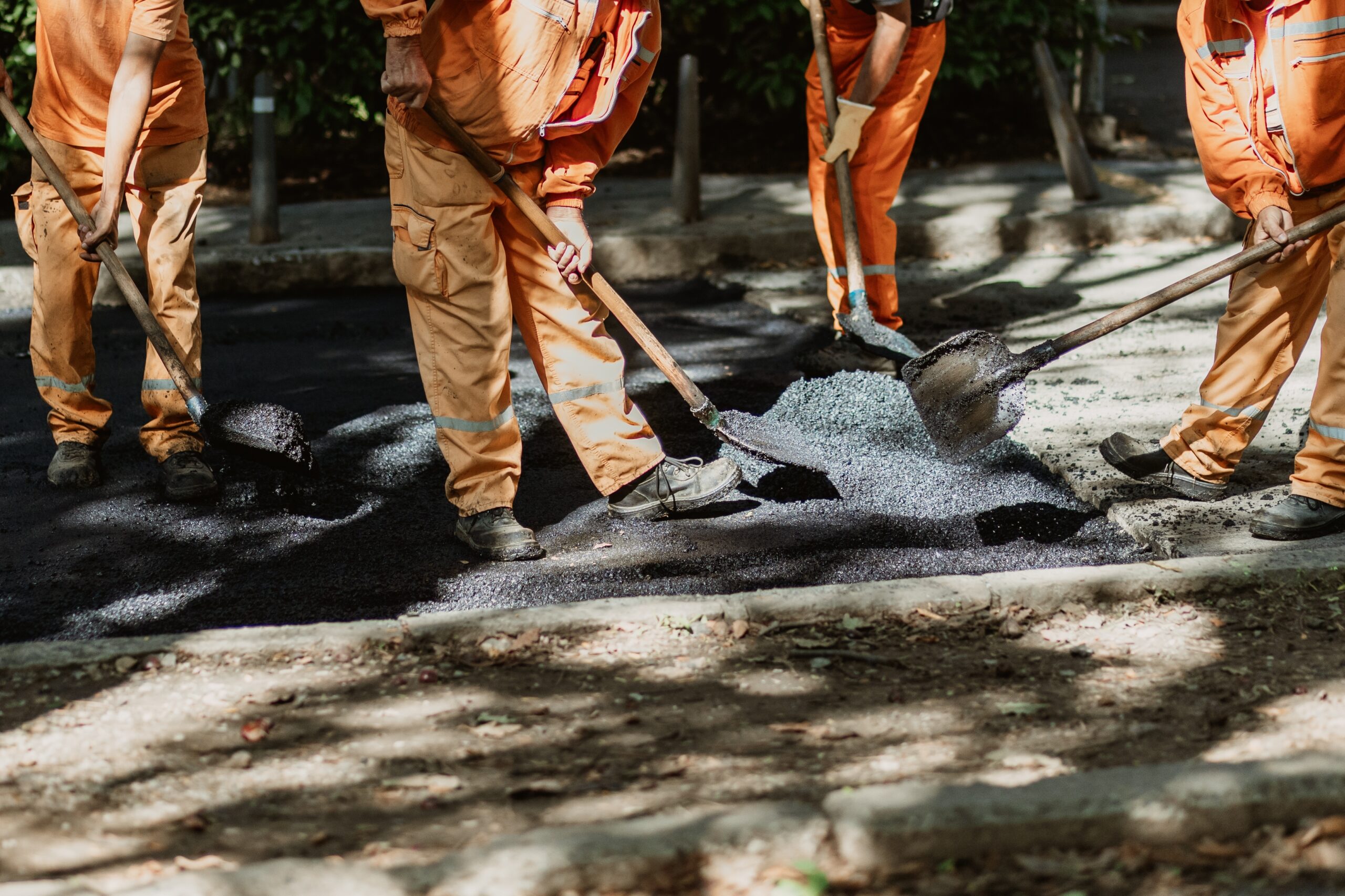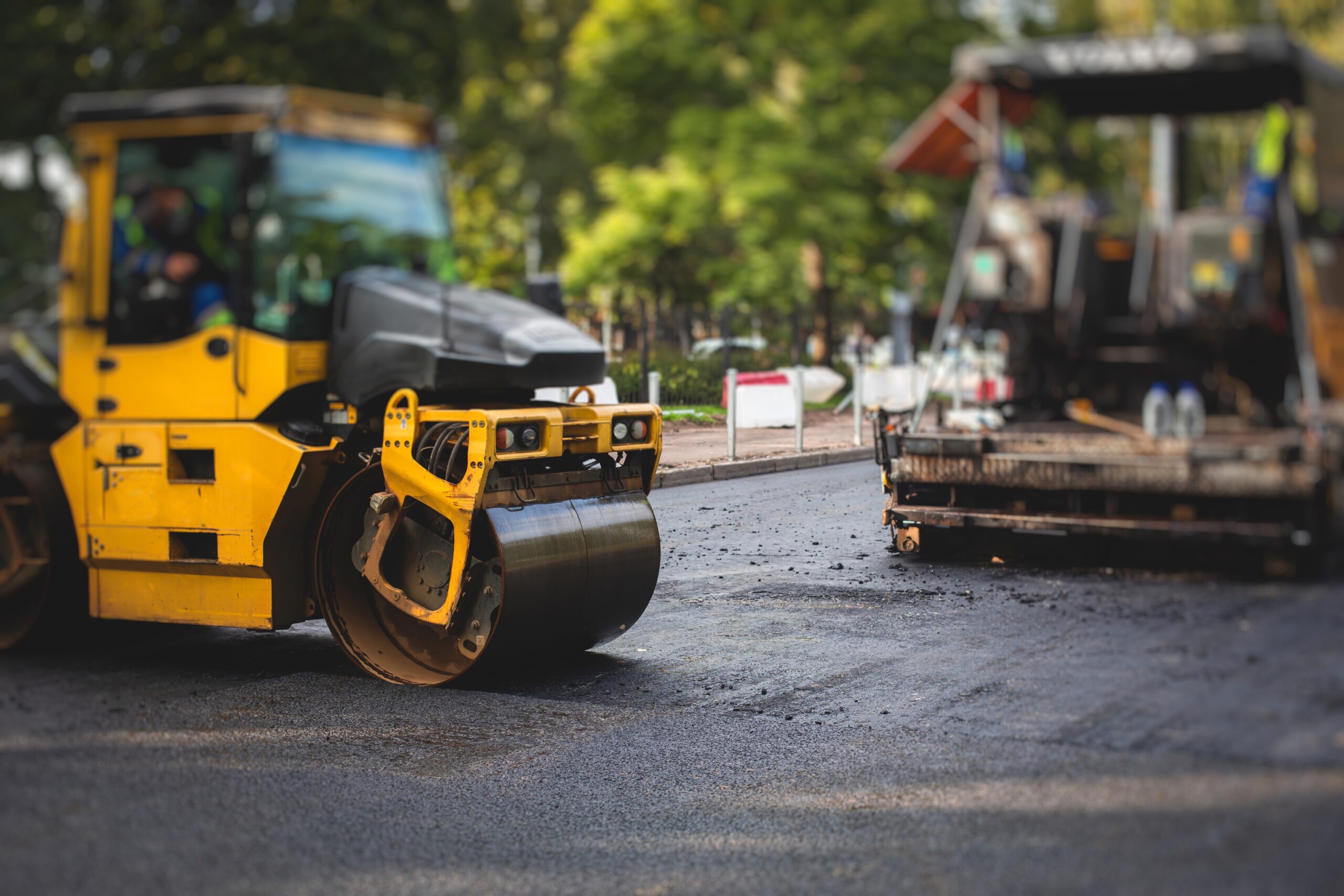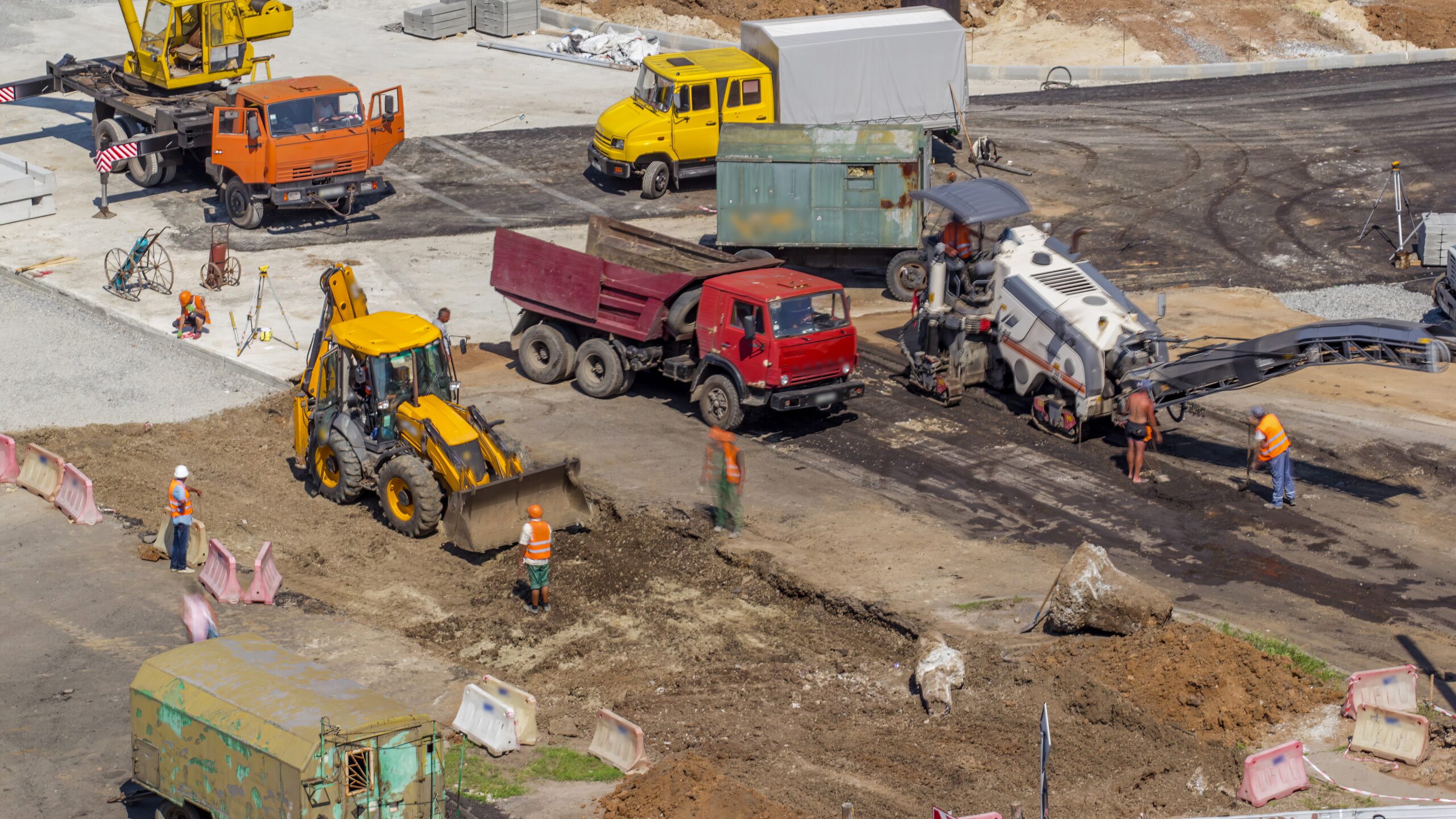Drainage is one of the most critical factors in pavement performance. Even the highest-quality asphalt or concrete can fail prematurely if water is not adequately managed and controlled. When water seeps into cracks or remains on the surface, it weakens the pavement’s structure and accelerates deterioration.
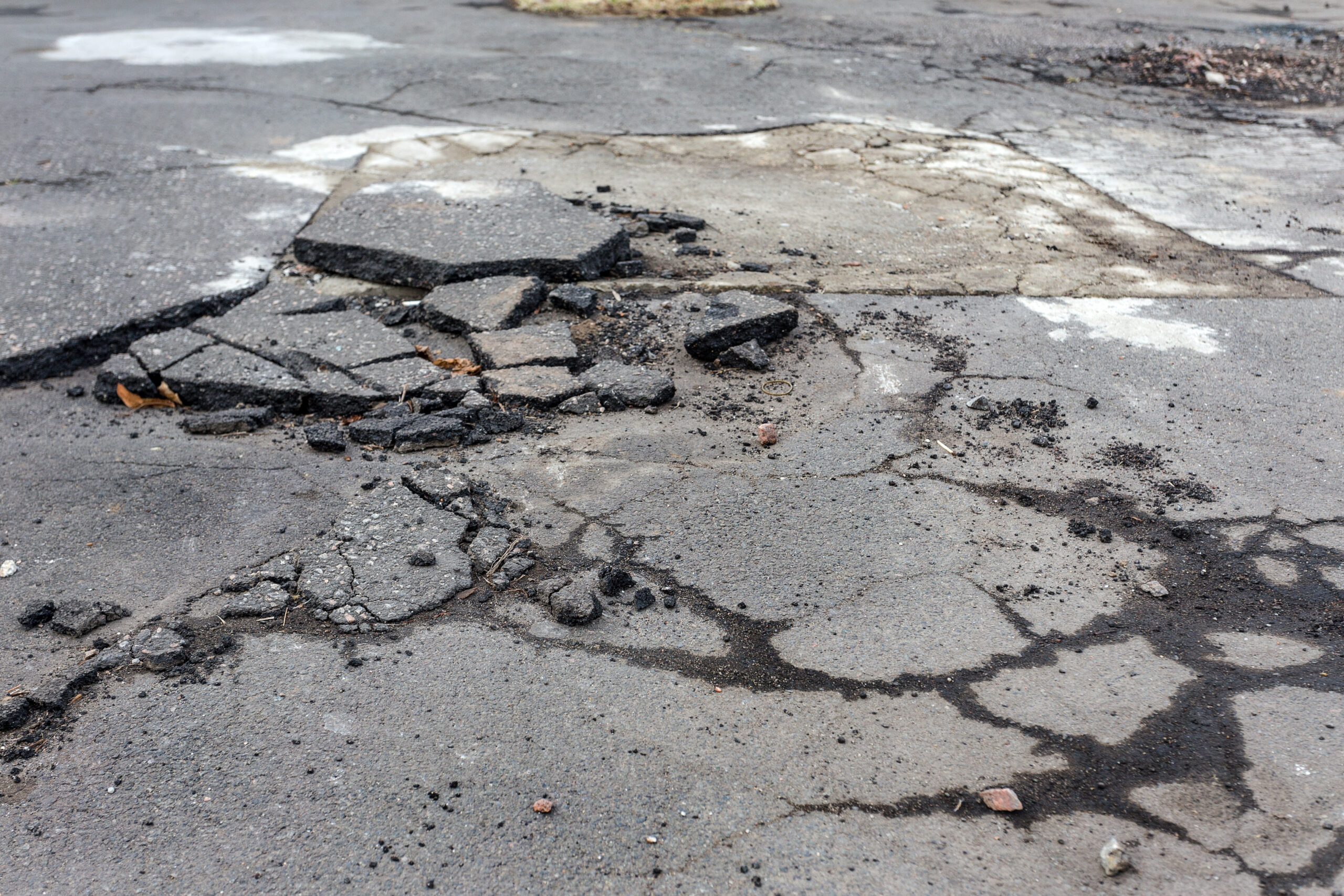
According to the Federal Highway Administration (FHWA), water infiltration is one of the leading causes of pavement damage in the U.S., contributing to cracking, rutting, and base failures that significantly shorten service life. For property managers, understanding how drainage impacts pavement is key to preventing costly repairs and protecting long-term investments.
This guide explains why drainage is essential, how it contributes to pavement failures, and what steps can help prevent damage.
Why Proper Drainage Matters in Pavement
Pavement is built to support heavy traffic, but its durability hinges on the stability of the base and subgrade. When drainage is poor, water accumulates on or below the surface, gradually undermining these structural layers. Over time, even minor water infiltration can significantly compromise pavement integrity, resulting in visible damage and increased safety risks.
A Transportation Research Record synthesis notes that pavements lacking internal drainage can remain saturated for extended periods, leading to erosion, cracking, stripping of the surface binder, and weakening of the subgrade. In contrast, pavements equipped with effective drainage systems experience far fewer water-related failures and enjoy much longer service lives.
Additionally, a Federal Highway Administration study found that environmental factors, including moisture and climate effects, account for 36% of total damage in flexible pavements and 24% in rigid pavements over a 15-year lifespan. This highlights the importance of drainage and moisture management in maintaining the health of pavements.
Signs of Drainage Problems in Parking Lots
Recognizing the early signs of poor drainage helps property managers take action before problems escalate.
- Standing water after rain or snow: pools of water indicate improper slope or clogged drains.
- Rapid pothole formation: water erodes the base layer, creating voids beneath the surface.
- Expanding cracks: Moisture seeps into cracks and widens them through freeze-thaw cycles, one of the main reasons potholes form and how to prevent them.
- Surface staining or algae growth: constant dampness signals poor water runoff.
How Poor Drainage Damages Pavement Over Time
Water is one of the most destructive forces acting on pavement. When it isn’t properly drained, moisture slowly undermines the structure from the inside out. What starts as small cracks or surface wear can escalate into serious failures if left unaddressed.
1. Water Infiltration Into the Base Layer
When water penetrates through cracks and joints, it reaches the subgrade beneath the pavement. Once the base becomes saturated, it loses stability and begins to shift under the weight of traffic. This process creates ruts, depressions, and ultimately leads to complete structural collapse.
2. Freeze-Thaw Expansion
In cold climates like Colorado, trapped water freezes in winter and expands by about 9% in volume. Each cycle of freezing and thawing pushes pavement apart, turning fine cracks into deep fractures. Over multiple seasons, this repetitive stress accelerates deterioration far beyond normal wear and tear.
3. Loss of Load-Bearing Strength
Moisture reduces the stiffness and density of asphalt and concrete, weakening their ability to carry traffic loads. As a result, vehicles create greater stress on the pavement, leading to fatigue cracking, pothole formation, and premature failure.
Common Causes of Drainage Problems
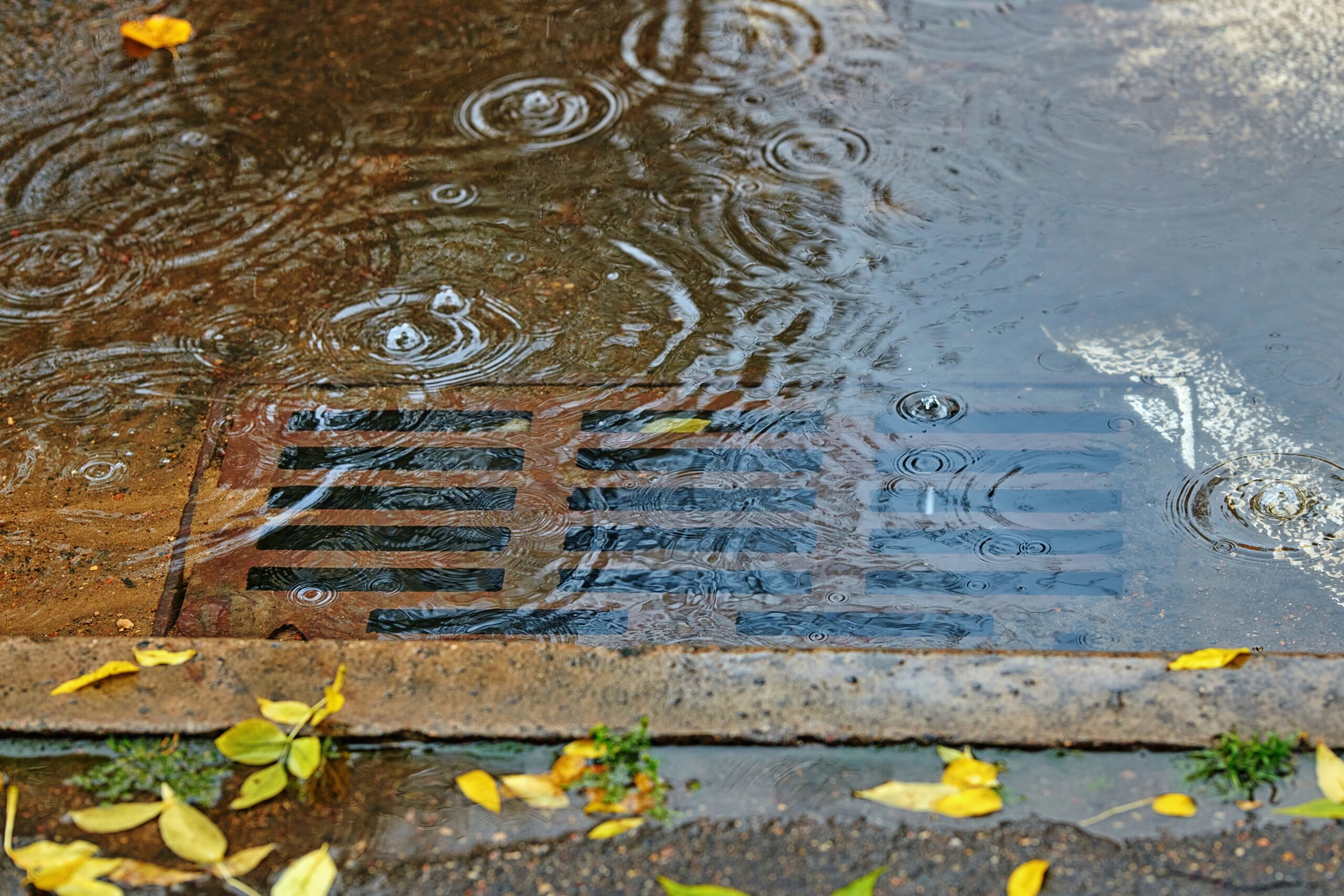
Most drainage issues in pavement can be attributed to construction flaws, wear and tear over time, or a lack of regular maintenance. Identifying the source of the problem is the first step in preventing severe damage.
- Improper Grading or Slope: If the pavement wasn’t constructed with the correct slope, water won’t flow toward the designated drains. Instead, it will remain on the surface, seep into cracks, and weaken the base.
- Clogged or Broken Drains: Drains are designed to carry water away, but when they become blocked with debris or damaged, water has nowhere to go. This can cause moisture to enter the pavement structure, accelerating its failure.
- Aging Pavement Losing Slope: Over time, heavy traffic and settling soil can cause pavement to shift and lose its slope. This creates low spots and depressions where water naturally collects.
- Poor Maintenance: Without routine cleaning and inspections, leaves, dirt, and debris build up and block drainage channels. Even a properly designed system will fail if it isn’t kept clear.
Solutions to Prevent Drainage-Related Pavement Failure
The good news is that drainage-related pavement damage can be prevented with the right design, maintenance, and timely repairs. By addressing problems early, property managers can extend the life of their pavement and avoid costly failures.
- Regrading and Resurfacing: During resurfacing, adjusting the slope ensures water drains away from the pavement instead of pooling in low spots. This helps protect the base and surface layers from moisture damage.
- Installing or Repairing Drainage Systems: Adding or upgrading systems such as catch basins, trench drains, or French drains directs water away from vulnerable areas and keeps the pavement structure dry.
- Sealcoating and Crack Sealing: Routine sealcoating adds a protective layer to the surface, while crack sealing keeps joints tightly closed; both steps prevent water from seeping into the pavement.
- Regular Inspections: Scheduling annual inspections, especially after harsh winters, enables the identification and correction of minor drainage problems before they escalate into major repair projects.
The Cost of Ignoring Drainage Problems
Overlooking drainage issues may seem harmless at first, but even minor water problems can create significant financial and safety risks over time.
- Increased Repair Expenses: Pooling water, clogged drains, or cracks left untreated eventually lead to costly asphalt damage.
- Shortened Pavement Lifespan: Without proper drainage, pavement deteriorates faster. What could have lasted 20-30 years may fail in half that time, forcing earlier resurfacing or reconstruction.
- Higher Liability Risks: Standing water, uneven surfaces, and potholes increase the chance of accidents for vehicles and pedestrians. This exposes property owners to potential legal and insurance claims.
- Business Disruptions: Major repairs or complete reconstruction often require extended closures. By ignoring drainage issues early, property managers risk more extended downtimes and lost revenue later.
Protect Your Pavement With Proper Drainage
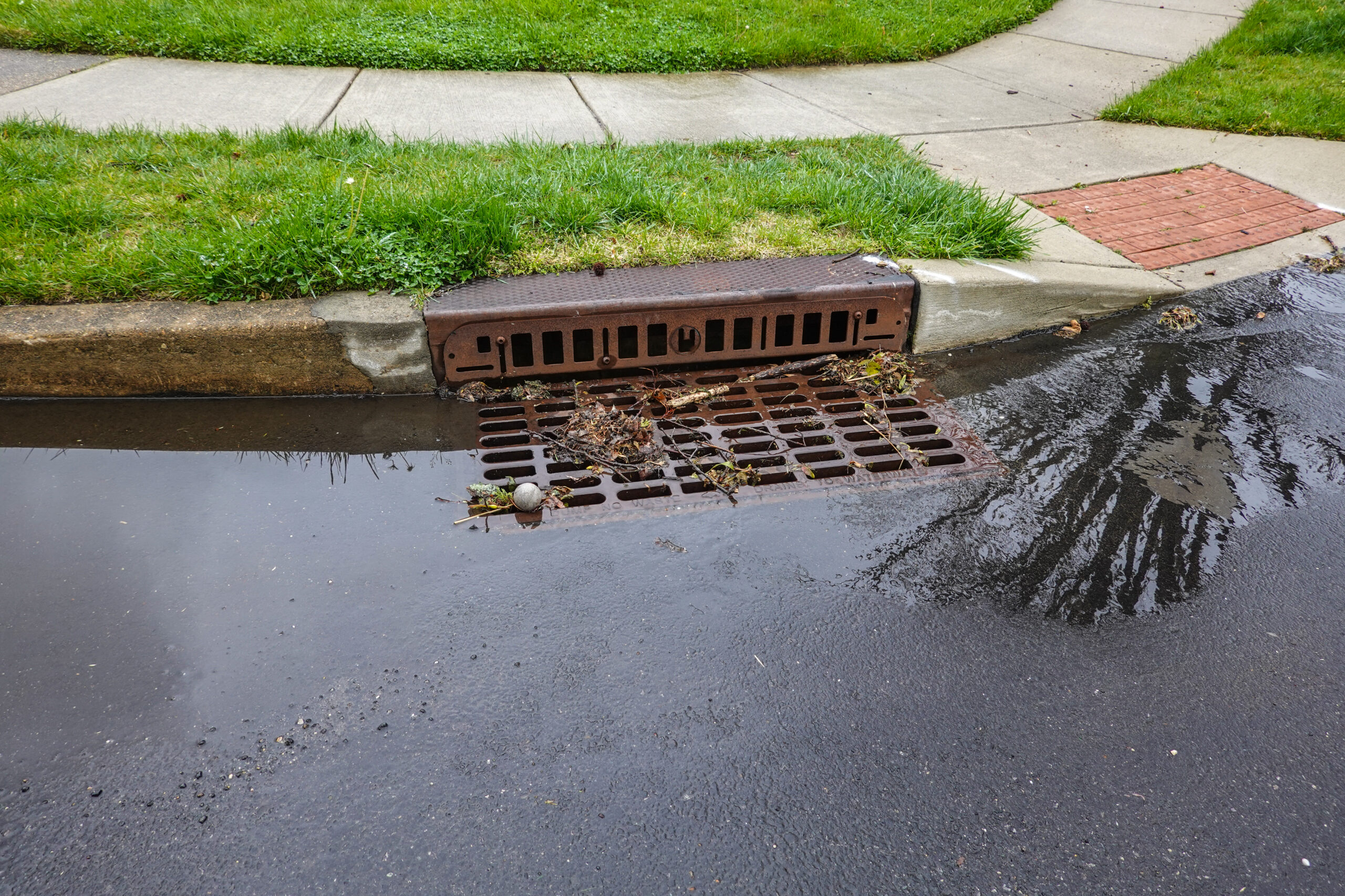
Drainage problems are one of the biggest hidden threats to pavement performance. Standing water, freeze-thaw cycles, and moisture infiltration can quickly turn minor cracks into major failures.
By addressing drainage during both construction and maintenance, property managers can extend pavement life, reduce repair costs, and maintain safer, more reliable surfaces.
At Asphalt Coatings Company, we specialize in designing and maintaining pavement systems that last. From grading and drainage improvements to resurfacing and repairs, our team ensures every project is built to withstand Colorado’s weather and traffic demands.
Contact us today for a professional assessment and keep your pavement strong for decades to come.
Frequently Asked Questions
1. Can poor drainage really cause pavement failure?
Yes. Water infiltration weakens the base and accelerates the formation of cracks, ruts, and potholes.
2. How can I determine if my parking lot has drainage issues?
Look for standing water, rapid pothole formation, or areas where cracks widen after rain or snow.
3. Is drainage more important in Colorado?
Yes. Freeze-thaw cycles in Colorado exacerbate the damage caused by trapped water, making drainage a crucial factor in mitigating this damage.
4. Can resurfacing fix drainage issues?
Yes. Resurfacing projects can include regrading and slope correction to improve drainage.
5. How often should drainage systems be inspected?
At least once a year, and after severe storms or winter seasons, to ensure drains remain clear and functioning correctly.

